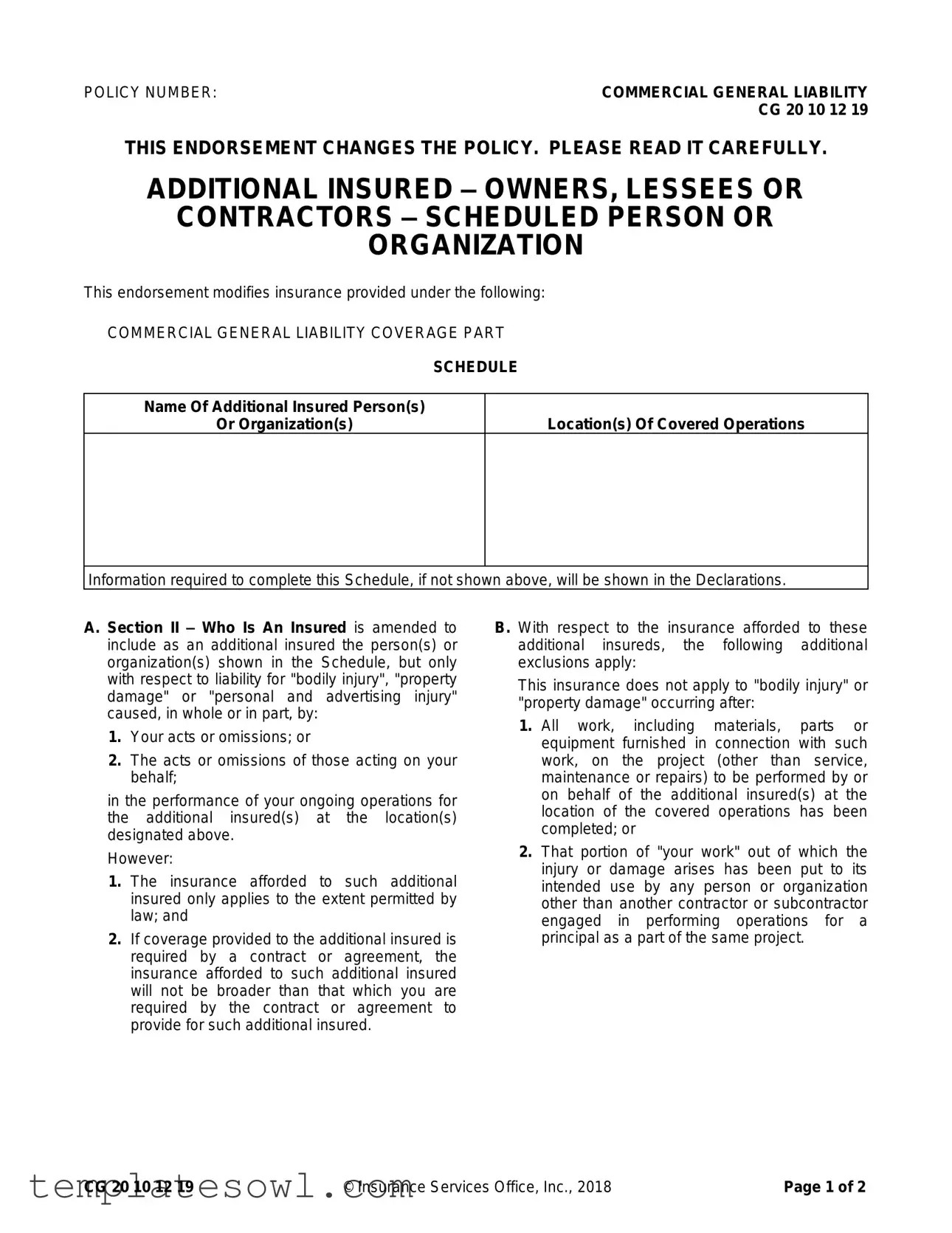What is the purpose of the CG 20 10 07 04 Liability Endorsement form?
The CG 20 10 07 04 Liability Endorsement form primarily serves to extend coverage under the Commercial General Liability (CGL) policy. It allows for certain individuals or organizations, specified in a schedule, to be added as additional insureds. This means they can receive coverage for liability stemming from bodily injury, property damage, or personal and advertising injury resulting from the actions or omissions of the insured or those acting on their behalf during ongoing operations at designated locations.
Who qualifies as an additional insured under this endorsement?
Additional insured parties are typically individuals or organizations that are explicitly listed in the endorsement's schedule. This endorsement offers coverage to these additional insureds, but it only applies regarding liabilities that arise from specific acts or omissions in the context of ongoing operations associated with the policyholder. The amount of coverage will also depend on what is permitted under the law and may be influenced by any pre-existing agreements or contracts.
Are there limits to the coverage provided to additional insureds?
Yes, there are notable limits. The coverage for additional insureds is subject to both the limits established in the primary policy and any limits outlined in relevant contracts or agreements. The endorsement clarifies that if coverage is contractually required, the maximum amount payable will be the lesser of what is detailed in the contract or the actual limits available under the insurance policy. This ensures that the coverage does not exceed agreed-upon terms.
What exclusions apply to this endorsement?
The endorsement contains specific exclusions. Coverage does not apply to bodily injury or property damage that occurs after the insured has completed all work associated with the project, except for ongoing service, maintenance, or repair activities. Additionally, if the construction or work has been put to its intended use by someone other than contractors directly involved in the project, coverage may not be applicable if any resulting injury or damage arises from that work.
How does this endorsement impact the overall insurance limits?
This endorsement does not augment the overall limits of insurance coverage. Instead, it operates within the existing limits defined in the general liability policy. Therefore, if additional insured coverage is claimed, the payout will remain bound by the standard limits already established, regardless of any endorsements that may be added.
What should policyholders do if they need to add additional insureds?
Policyholders should closely review the terms of their existing policies and any relevant contracts. When needing to add additional insureds, they must fill out the necessary information in the endorsement's schedule. It may also be prudent to consult with an insurance professional or legal advisor to ensure compliance and understanding of coverage implications and exclusions.

